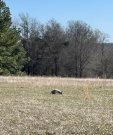Major Land Resource Area 087A
Texas Claypan Area, Southern Part
Accessed: 12/21/2025
Next steps
-
1
Select an ecological site
Select an ecological site using the list, keys, photos, briefcase, or quick search option located on this page. -
2
Explore the ecological site description
Next, learn more about the selected ecological site and its characteristic dynamics by browsing the ecological site description and exploring alternative state and transition model formats.
Ecological site list
-
i
Key Characteristics
- Uplands and stream terraces
- Greater than 15 percent gravels, sandstone, and ironstone by volume in the surface and/or subsoil
- Greater than 15 percent gravels (0.08 to 3 inches) by volume in surface and/or subsoil
-
i
Key Characteristics
- Uplands and stream terraces
- Greater than 15 percent gravels, sandstone, and ironstone by volume in the surface and/or subsoil
- Greater than 15 percent sandstone and ironstone (greater than 3 inches) by volume in surface and/or subsoil
-
i
Key Characteristics
- Uplands and stream terraces
- All others
- Loamy surface soils with an abrupt textural change to a clayey subsoil 5 to 15 inches deep
-
i
Key Characteristics
- Uplands and stream terraces
- All others
- All others
- Very deep, reddish‐colored, loamy and clayey soils that are highly vegetatively productive
-
i
Key Characteristics
- Uplands and stream terraces
- All others
- All others
- All others
- Soils with sandy or sandy loam surface textures less than 40 inches deep
- Sandy and sandy loam surface is less than 20 inches with a gradual increase in subsoil clay content
-
i
Key Characteristics
- Uplands and stream terraces
- All others
- All others
- All others
- Soils with sandy or sandy loam surface textures less than 40 inches deep
- Sandy surface is greater than 20 inches, but less than 40 inches
-
i
Key Characteristics
- Uplands and stream terraces
- All others
- All others
- All others
- Soils with sandy surface textures greater than 40 inches deep
- Sandy surface is greater than 40 inches above an increase in clay content
-
i
Key Characteristics
- Uplands and stream terraces
- All others
- All others
- All others
- Soils with sandy surface textures greater than 40 inches deep
- No increase in subsurface clay, soils are sandy to 80 inches or greater
-
i
Key Characteristics
- Bottomlands and flood plains
- Bottomlands and draws with sandy soils
- Draws with sandy soils beginning at drainageways
-
i
Key Characteristics
- Bottomlands and flood plains
- Bottomlands and draws with sandy soils
- Bottomlands with sandy soils
-
i
Key Characteristics
- Bottomlands and flood plains
- Bottomlands with loamy and clayey soils
- Bottomlands with loamy soils
-
i
Key Characteristics
- Bottomlands and flood plains
- Bottomlands with loamy and clayey soils
- Bottomlands with clayey soils
Ecological site map
Basemap
Find me
Find point
Full screen
Zoom in to display soil survey map units for an area of interest, and zoom out to display MLRAs. Select a map unit polygon to view ecological sites correlated to that map unit. View a brief description of an ecological site by clicking on its name in the map popup. Soil survey correlations may not be accurate, and ecological site classification of a location should always be verified in the field. Each selection may require the transfer of several hundred KB of data.
Ecological site keys
Ecological site photos
Print Options
Sections
Font
Other
Briefcase
Add ecological sites and Major Land Resource Areas to your briefcase by clicking on the briefcase (![]() ) icon wherever it occurs. Drag and drop items to reorder. Cookies are used to store briefcase items between browsing sessions. Because of this, the number of items that can be added to your briefcase is limited, and briefcase items added on one device and browser cannot be accessed from another device or browser. Users who do not wish to place cookies on their devices should not use the briefcase tool. Briefcase cookies serve no other purpose than described here and are deleted whenever browsing history is cleared.
) icon wherever it occurs. Drag and drop items to reorder. Cookies are used to store briefcase items between browsing sessions. Because of this, the number of items that can be added to your briefcase is limited, and briefcase items added on one device and browser cannot be accessed from another device or browser. Users who do not wish to place cookies on their devices should not use the briefcase tool. Briefcase cookies serve no other purpose than described here and are deleted whenever browsing history is cleared.
Ecological sites
Major Land Resource Areas
The Ecosystem Dynamics Interpretive Tool is an information system framework developed by the USDA-ARS Jornada Experimental Range, USDA Natural Resources Conservation Service, and New Mexico State University.










